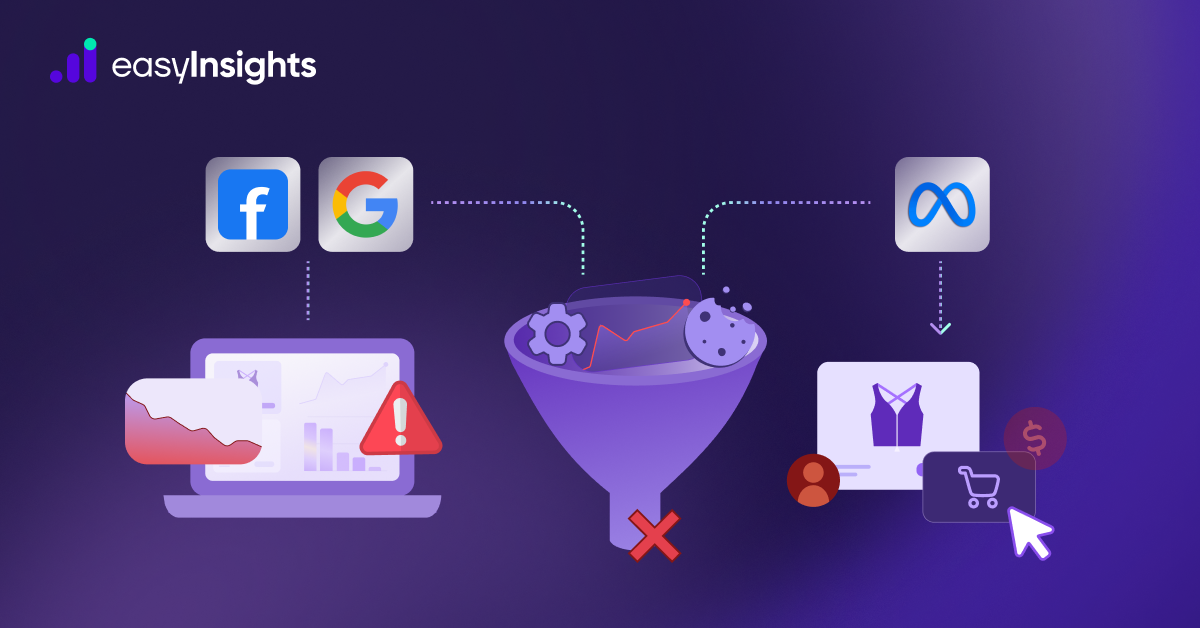
As of 2023, 91% of businesses use video in their marketing efforts, and a staggering 96% believe it to be an ‘important part’ of their strategy. In other words, you’re missing out if you’re not using video marketing today.
Videos might not seem like the obvious choice for businesses, but these are a goldmine hiding in plain sight. Especially considering the average attention span of a human being is 8.25 seconds, worse than that of a goldfish! So you see, marketers have a short window to make it or break it when it comes to being remembered. These visually appealing bits of content can help marketers drive customer engagement, brand awareness and, most importantly, generate leads.
If you’re wondering how this article is for you, here we discuss everything about video marketing, from why you should consider it to how to build a stellar video marketing strategy.
Jump ahead to:
What is Video Marketing, and Why should you Consider it?
Video marketing is a marketing technique that leverages the video format to further marketing efforts such as brand awareness, customer engagement, lead generation, and conversion. This type of content is easy to digest, visually appealing, and preferred by customers, making it an easy choice for marketers.
What makes Video Marketing so Powerful?
1. Improve Brand Reach
Videos hold the potential to transcend linguistic boundaries. These content types can translate your brand message in the form of universal sounds and visuals that can resonate with a variety of audiences, globally.
A great example of this is Uber Eats. The online food ordering company used video marketing to help viewers understand how their app works. By using illustrations, animated graphics, and an easy design style, Uber Eats used videos to communicate their entire offering.
Further, they added a basic voiceover that allowed the viewer to feel like they were directly being spoken to, adding a personalized feel to it.
2. Drive Social Engagement
Wyzowl finds that 91% of consumers want to see more online videos from businesses. This comes as no surprise considering how easy videos are to digest. Their visual elements breaks the monotony of paragraphed content to offer information in a more visually pleasing format that grips the viewer’s attention.
Further, once your viewers like the video, they will share it, allowing your audience to become a medium of promotion themselves. With today’s social media platforms becoming the epicenter of online activity, video sharing can facilitate greater customer engagement organically.
3. Help Establish Industry Standing
Video marketing is not limited to pre-recorded content only. Businesses can consider hosting live sessions with their audience to offer a personalized experience as well. This allows customers to interact directly with the business, get answers to their questions, and gain clarity on the product or service.
Moreover, through this process, businesses establish themselves in the space while building a relationship of trust with their customers.
Video marketing brings a lot to the table. It allows businesses to better engage with their customers, provide value, and do it all in a visually compelling manner. But that’s not all; this technique also allows brands to make a greater impression. In fact, a survey finds that viewers claim to retain 95% of the information when obtained from a video. This makes video marketing essential for brand awareness and lead generation. Offer your visitors value, and they’ll be more inclined to continue their buyer journey with you.
Type Of Videos to consider for Lead Generation
The video type you choose relies heavily on your end goal. Here are the types of videos you should consider when aiming for lead generation.
1. Brand Videos
These types of videos share the brand story. It humanizes the brand, allowing customers to get emotionally invested in your offering, thus building consumer trust and lead generation.

2. Customer Testimonials
Nothing convinces viewers of your credibility like customer testimonial videos. Documenting how your past customers have benefited from your product or service is a powerful tool for generating leads.
3. Demo And Unboxing Videos
Demo videos help highlight the best parts about your product or service, especially how easy it is to use or operate. Unboxing videos are similar content types that offer the viewer a front-row seat into how it would be like to convert into a paying customer. And these are extremely popular with viewers.
In fact, Google finds that the amount of time users spend watching unboxing videos can be equated to watching ‘Love Actually’ 20 million times.
4. FAQ Videos
These are videos that offer answers to Frequently Asked Questions (FAQs). Dedicating video content to these allow businesses to establish themselves as industry leaders.
5. Live Videos
These are sessions held in real time. Businesses can host these types of videos to answer specific queries and connect better with their target audience. Brands can always collect personal contact information in exchange for access to these events.
Creating a Robust Video Marketing Strategy
Here is a roadmap to creating your video marketing strategy.
1. Do Research: Studying Target Audience and their Online Hangouts
Knowing who your video marketing efforts are for, is the first rung of the ladder leading to a successful strategy. Only then will you be able to offer relevant and valuable content that brings in leads. This entails learning their pain points, motivations, and goals. In other words, building a buyer persona. This fictional representation of your ideal customer will help you create content that aligns with them.
Next, identify their preferred platforms. For instance, if your ideal customer is a Gen Z working in the apparel industry, your top platforms could include Instagram, Pinterest, and LinkedIn. Now if you choose to share your videos on Facebook, they’ll never reach your audience, let alone generate leads.

2. Choosing the type of Videos
Now that you have your target audience and platforms locked down, your next step is identifying the type of videos you want to share. As discussed above, brand videos, customer testimonials, demos, and FAQ videos are ideal for lead generation.
But the length and format of the video will depend on your chosen platforms. For instance, optimizing the content for reels and stories is best if you decide to publish videos on Instagram. You can always keep short 30-second videos on these platforms and offer a complete 3-minute video on your website where visitors can share their credentials before hitting play.
This will allow you to gain leads via video content.
Additional read: YouTube vs. Facebook: Which Is the Best Channel to Generate Leads?
3. Creating Videos
This is the stage where the magic happens. Creating your video’s content will entail the following.
- Specifying equipment and props
- Scriptwriting and storyboarding
- Hiring necessary talent such as actors, VFX professionals, etc., depending on the video script
- Optimizing videos for platforms to make them easily discoverable. For instance, adding tags, language closed captions, attractive descriptions and thumbnails etc., for YouTube videos.
Creating a marketing video requires a detailed approach that takes into account every aspect of the video while keeping the big-picture goals in mind.
4. Scheduling Content
Once your videos are ready and optimized, your next step is planning your publishing schedule. Ensuring you share relevant and regular content is the cornerstone of a successful marketing strategy. Make sure you have a calendar that allows a steady flow of content to your target audience to keep them interested in your product and eventually convert into paying customers.
5. Tracking all Video Marketing Efforts
The last step is analyzing how your video content performs. Keeping track of this allows you to learn how successful your video marketing campaign is as well as identify areas of improvement. For instance, if you’re noticing a greater customer engagement with your product demo videos, it might be a good idea to tweak your calendar to incorporate more of those in the future.
Additionally, online platforms come with in-built analytics, such as Instagram Insights and YouTube Analytics, that help you track your metrics efficiently.
Additional read: Understanding LinkedIn Page Analytics Through an Agency’s Perspective
Video Marketing: Best Practices
Now that you know all about video marketing and how to create a strategy for your business, here are some points to help you make the most of them.
1. Keep It Short and Simple
Keeping your video crisp and to the point is a must. As discussed earlier, your customer’s attention span is short, so anything that demands too much time with not enough value will not cut it. In fact, Wistia finds that videos under a minute get the highest engagement.
2. Offer Videos as Gated Content
You can also combine videos with blog posts and other content types to offer these to visitors who subscribe to your newsletters. If your video is relevant and valuable, they’ll be willing to share their information to gain access to it. Thus helping you generate leads.
3. Include a Call to Action (CTA)
Offering great, valuable, and relevant content and forgetting to point the viewer to the next step is like making a great dish but forgetting to serve it up. It’s all for nothing.
And so, ensure you include a CTA at the end of each video. This could be anything from asking them to subscribe to your social media channel to directing them to watch the complete video on your website.
4. Strike a Balance between Production Value and Quality
Creating stellar visuals can only get you so far. Ensure your video content strikes a balance between offering value to your viewer and aesthetic visuals. Allowing the latter to guide your video content might get you temporary attention, but if you want viewers to sign up and share their details, it’s value they’re looking for.
5. Track Performance of Video Marketing Efforts
Your work doesn’t end once your campaign is up and running. In fact, we can argue that the work really begins after the show. That’s because now you must track how your campaigns are doing. Gathering data and analyzing campaign performance is key to ensuring your lead generation efforts leave no stone unturned.
And to streamline the process, you can consider integrating analytics tools like EasyInsghts to help you gather, study and extract insights from your video marketing data.
Additional read: 6 Data-Driven Marketing Strategies That Are a Game-Changer
Final Takeaway
Video marketing is not your average Joe. This marketing technique can help you not only get eyeballs to your content but stay long enough to make an impression. And considering today’s cut-throat, competitive marketing landscape, video marketing could be your answer to hitting lead generation targets.
And if you’re looking to surpass your targets, your first step is identifying a reliable and advanced data analytics platform, like EasyInsights. By integrating seamlessly with ad-platforms, and your CRM system, this analytics tool offers a granular view into how visitors are interacting with your brand. Further, it drives your lead nurturing goals by scoring leads and sharing them with your sales team for a faster and more efficient process.
So, take your lead generation efforts to a whole new level with EasyInsights. Request a demo today!








